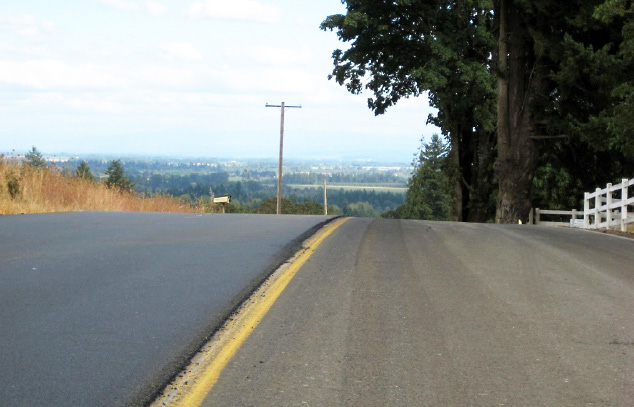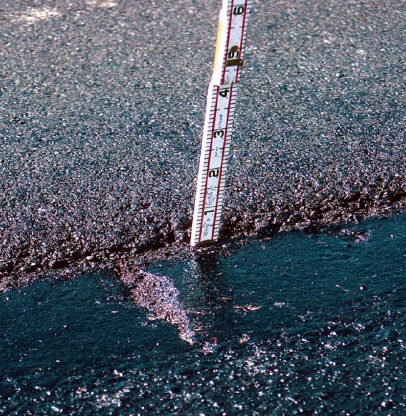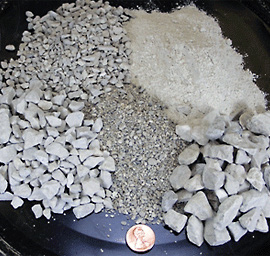
 Thin asphalt overlays are smooth, strong and durable. (Image courtesy of NAPA)
Thin asphalt overlays are smooth, strong and durable. (Image courtesy of NAPA)
The article explains that these thin overlays are “specifically engineered for preservation [and] can be placed as thin as necessary, say three-quarters of an inch.” Moreover, they are “designed with finer grading and use binders that result in a flexible, waterproof, skid-resistant preservation treatment that seals and protects the existing pavement while also improving smoothness and adding some structure.” A quality product, exactly as you would expect from asphalt.
Early maintenance for long-term savings

According to Erv Dukatz, Vice President of Materials and Research at Mathy Construction, this technique is being promoted by the Wisconsin asphalt industry and has already made inroads here. “Mathy did some work of this nature on I-39,” Dukatz says. “In that case there was top-down cracking about three-quarters of an inch deep. We milled down one-and-a-quarter inches and used a thin overlay mix.” The idea, he says, was to replace just the worn surface layer where there wasn’t any bottom-up cracking, just normal wear and tear.
Moving up the timetable for rehabilitation represents a paradigm shift in maintenance philosophy, Dukatz says. Instead of waiting 15 to 18 years and conducting a full-depth reclamation, maintenance can be conducted much earlier, but with a much thinner mill and overlay. The benefits are significant extension of pavement life and possibly pushing off the next maintenance to year 20 or longer. “This approach to maintenance is a very powerful tool,” he says.
We think it may challenge some perceptions as well. Going in for the first rehabilitation (albeit a quick and inexpensive one) will likely mean correcting a pavement that doesn’t look visually distressed enough to merit maintenance. However, this maintenance philosophy is a sound one, and the long-term cost benefits are certain to drive acceptance.
The challenge of thin lifts in Wisconsin

As the NAPA article notes, thinner layers require smaller gradation of aggregate. Currently Wisconsin standard specifications define the smallest aggregate (described in NMAS, or nominal maximum aggregate size) as 9.5 mm. However, very thin layers require an even smaller gradation.
That’s where Wisconsin’s new special provision comes in. It defines a mix with NMAS of 4.75 mm to use on thinner lifts. The new provision also defines new mixes for slightly larger aggregate sizes that appear in the current specs (like 9.5 mm) specially formulated for better durability.
WisDOT Engineering Specialist Judie Ryan describes some of the technical challenges associated with very thin asphalt layers: “With thicker lifts, you can sometimes rely on experience and the ‘art’ of construction for putting the proper amount of rock and liquid together. But when you go thin, the tighter tolerances really push techniques toward mix engineering. Thinner lifts mean a smaller margin of error and larger attention to detail during both production and construction activities.”
This is driving an additional need for WisDOT pilot projects to keep refining the special provision and work toward a standard specification. “These thin pavements are an exciting product, and we’re trying to get good at them and get good fast,” Ryan says. “The economy demands it, and the industry is willing to provide it. The rest of the country is starting to go there. Why not us?”
Ryan notes that WisDOT and its technical team are going to be carefully evaluating these projects, with plans to conduct extensive testing and use those results to refine the special provision before it is finalized in the standard specification, which she expects in a few short years. For now, the special provision is available.
More than overlays
In the end, the strategies for thin layers will serve multiple applications. They will not only support thin overlays for maintenance work, but can also be used in contracts designed for complete pavement rehabilitation that call for multilift pavements that are thinner than current standards allow.
Ryan succinctly lays out the case for thin asphalt. “Superpave used to be about appropriate thickness,” she says. “But now, we’re about being efficient, and the way to be efficient is with appropriate thinness.” Thin layers and thin overlays will be an integral tool to advance making efficient and high-performing pavements in Wisconsin.
